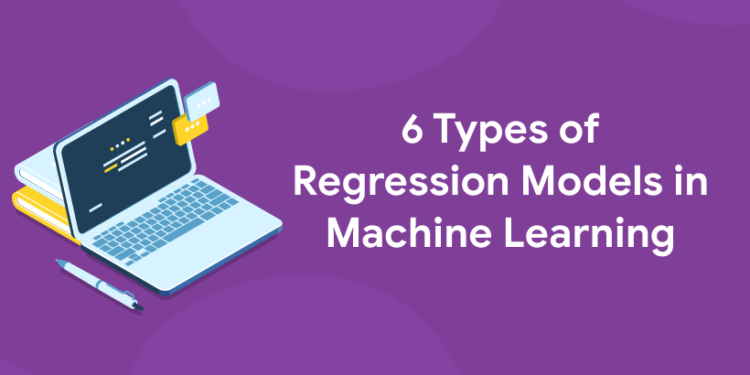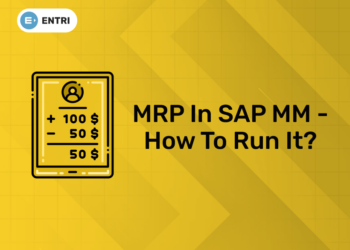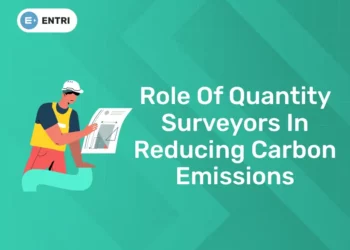Table of Contents
Machine learning is utilized to tackle the regression problem utilizing two different types of regression analysis techniques: logistic regression and linear regression. They are the most well-known regression approaches. Regression analysis approaches in machine learning come in a variety of forms, and their use depends on the type of data being used.
What is Regression Analysis?
A predictive modeling method called regression analysis examines the relationship between the goal or dependent variable and the independent variable in a dataset. When the target and independent variables exhibit a linear or non-linear connection between one another and the target variable has continuous values, one of the several types of regression analysis techniques is applied. Regression analysis is frequently used to identify cause and effect relationships, forecast trends, time series, and predictor strength. The main method for resolving regression issues in machine learning using data modeling is regression analysis. Finding the optimum fit line, which minimizes the distance from each data point while passing through all the data points, is what this process entails.
Enroll in our certificate program in data science and Machine learning
Types of Regression Analysis Techniques
Regression analysis approaches come in a wide variety, and the number of components will determine which methodology is used. The kind of target variable, the pattern of the regression line, and the number of independent variables are some examples of these variables.
The many regression approaches are listed below:
- Linear Regression
- Logistic Regression
- Ridge Regression
- Lasso Regression
- Polynomial Regression
- Bayesian Linear Regression
1. Linear Regression
One of the most fundamental kinds of regression in machine learning is linear regression. A predictor variable and a dependent variable that is linearly connected to one another make up the linear regression model. Numerous linear regression models are what linear regression is known as when there are multiple independent variables included in the data.
The below-given equation is used to denote the linear regression model:
y=mx+c+e
where m is the slope of the line, c is an intercept, and e represents the error in the model.
Enroll in our latest machine learning course in the Entri app
The values of m and c are changed to find the line that fits the data the best. The discrepancy between the observed and anticipated values is known as the predictor error. The values of m and c are chosen so as to provide the least amount of prediction error. It’s crucial to remember that an outlier might affect a basic linear regression model. As a result, it shouldn’t be applied to large data sets. Different kinds of linear regression exist. Simple linear regression and multiple linear regression are the two main varieties of linear regression. Here is the equation for straightforward linear regression.
- Here, y is the predicted value of the dependent variable (y) for any value of the independent variable (x)
- β0 is the intercepted, aka the value of y when x is zero
- β1 is the regression coefficient, meaning the expected change in y when x increases
- x is the independent variable
- ∈ is the estimated error in the regression
Simple linear regression can be used: to determine how strongly two variables are correlated. such as the rate of global warming and carbon emissions to determine the dependent variable’s value based on an explicit independent variable value. Finding the amount of atmospheric temperature rise associated with a specific carbon dioxide emission, for instance. A correlation between two or more independent variables and the related dependent variables is established in multiple linear regression. The formula for multiple linear regression is shown below.
- Here, y is the predicted value of the dependent variable
- β0 = Value of y when other parameters are zero
- β1X1= The regression coefficient of the first variable
- …= Repeating the same no matter how many variables you test
- βnXn= Regression coefficient of the last independent variable
- ∈ = Estimated error in the regression
You may use multiple linear regression to:
to calculate the degree to which one dependent variable is influenced by two or more independent variables. For instance, how location, time, condition, and region might affect a property’s price.
To determine the dependent variables’ values under a certain circumstance for each of the independent variables.
2. Logistic Regression
When the dependent variable is discrete, one form of regression analysis approach is used: logistic regression. For instance, true or false, 0 or 1, etc. As a result, the target variable can only take on two values, and the relationship between the target variable and the independent variable is represented by a sigmoid curve. In logistic regression, the logit function is used to quantify the connection between the dependent and independent variables. The logistic regression equation is shown below.
logit(p) = ln(p/(1-p)) = b0+b1X1+b2X2+b3X3….+bkXk
where p is the probability of occurrence of the feature.
It should be mentioned that while choosing logistic regression as the regression analyst approach, the quantity of the data is significant and the incidence of values in the target variables is almost equal. Additionally, there shouldn’t be any multicollinearity, which indicates that the dataset’s independent variables shouldn’t be correlated with one another.
3. Ridge Regression
Another regression type utilized in machine learning, this one is typically applied when the correlation between the independent variables is large. This is because the least square estimations provide unbiased results for multicollinear data. But there could be some bias value if the collinearity is really high. As a result, the Ridge Regression equation includes a bias matrix. With this effective regression technique, the model is less prone to overfitting.
Below is the equation used to denote the Ridge Regression, where the introduction of λ (lambda) solves the problem of multicollinearity:
β = (X^{T}X + λ*I)^{-1}X^{T}y
4. Lasso Regression
One of the regression models used in machine learning that combines feature selection and regularisation is called Lasso Regression. It forbids the regression coefficient’s maximum absolute value. As a result, unlike in the case of Ridge Regression, the coefficient value approaches zero.
As a result, Lasso Regression uses feature selection, which enables choosing a collection of features from the dataset to create the model. Only the necessary characteristics are utilized in Lasso Regression, and the rest are set to zero. This aids in preventing the model from becoming overfitting. Lasso regression selects just one variable when the independent variables are strongly collinear, and it causes the other variables to be reduced to zero.
Below is the equation that represents the Lasso Regression method:
N^{-1}Σ^{N}_{i=1}f(x_{i}, y_{I}, α, β)
Enroll in our latest machine learning course in the Entri app
5. Polynomial Regression
Another sort of regression analysis approach used in machine learning is polynomial regression, which is essentially the same as multiple linear regression with a few minor adjustments. The n-th degree in polynomial regression defines the link between the independent and dependent variables, X and Y. There are few differences between polynomial regression and multiple regression algorithms. The n-th degree link between independent and dependent variables is the unique distinction between these two.
All of the data points, in this case, will be traversed by the best fit line, however, it is not a straight line. It is a curving line that depends on the degree of the polynomial, the power of x, or the value of n. The model may be prone to overfitting while attempting to attain the lowest possible Mean Squared Error and the best fit line. It is advised to evaluate the curve toward the end since extrapolating higher polynomials might provide odd results. The model may be prone to overfitting while attempting to attain the lowest possible Mean Squared Error and the best fit line. It is advised to evaluate the curve toward the end since extrapolating higher polynomials might provide odd results.
The below equation represents the Polynomial Regression:
l = β0+ β0x1+ε
6. Bayesian Linear Regression
One of the regression models used in machine learning, known as Bayesian Regression, calculates the value of the regression coefficients using the Bayes theorem. Instead of locating the least squares, this regression approach determines the posterior distribution of the features. Similar to both linear regression and ridge regression, bayesian linear regression is more stable than basic linear regression. Regression in artificial intelligence and machine learning is a question that is frequently asked. Because machine learning is a part of AI, the answers to both queries are the same. When it comes to regression in AI, several methods are employed to teach a machine the relationship between the supplied data sets so that it may generate predictions in line with that knowledge. Regression in AI is therefore mostly used to increase the automation of the machines.
In industries like banking and investing, where establishing a link between a single dependent variable and several independent factors is a frequent situation, regression artificial intelligence is frequently employed. Regression AI frequently uses variables to predict a home’s price depending on its location, size, ROI, etc. In many machine learning applications, regression is used and has a key function in predictive modeling. Regression algorithms offer several viewpoints on the relationship between the variables and their results. Then, new input data or the search for missing data might be guided by these set models.
Since the models are taught to comprehend a wide range of correlations between various factors, they are frequently quite useful for forecasting the performance of a portfolio or certain stocks and trends. These applications fall under finance machine learning.
The very common use of regression in AI includes:
- Predicting a company’s sales or marketing success
- Generating continuous outcomes like stock prices
- Forecasting different trends or customer’s purchase behavior
| Related Articles | |
| Best Data Science Skills | Machine Learning Basics |
| EDA Steps, Importance | EDA Techniques |
| Data Analysis | Importance of Data Preprocessing in ML |











